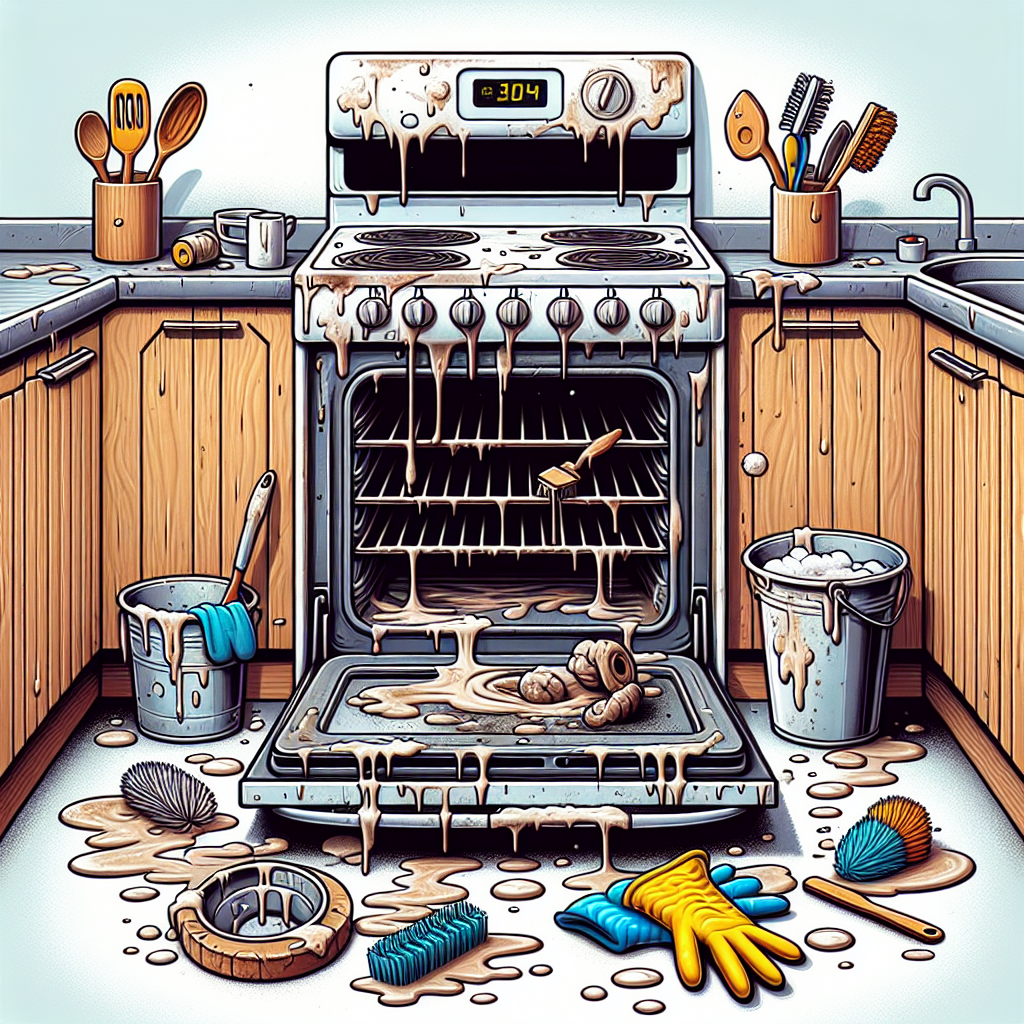“`html
The Dirty Truth: There is No Good Way to Clean Your Oven
When it comes to household chores, one of the most dreaded tasks is cleaning the oven. It’s a job that often gets pushed to the bottom of the to-do list, and for good reason. The truth is, despite the countless products and methods advertised for oven cleaning, there really is no effective way to get that appliance sparkling clean without some drawbacks. In this article, we’ll dive deep into the realities of oven cleaning and explore why it’s time to face the facts.
The Reality Behind Oven Cleaning Methods
There are several popular methods for cleaning your oven, ranging from commercial cleaners to natural solutions. But do any of them truly live up to the hype? Let’s break down the most common cleaning methods and their limitations.
1. Commercial Cleaners
Many people turn to commercial oven cleaners for a quick fix to their greasy problems. However, most of these products are laden with harsh chemicals, which can pose health risks and environmental concerns.
- Strong Odors: The fumes from these cleaners can be overwhelming and may require extensive ventilation.
- Health Hazards: Some ingredients are corrosive and can cause skin burns or respiratory issues if not handled properly.
- Effectiveness Issues: Even with these powerful formulas, baked-on grime may still resist removal, leaving you to scrub harder.
2. Natural Cleaning Solutions
For those looking for eco-friendly options, baking soda and vinegar are popular choices. While these natural alternatives are safer for your health and the environment, they too come with significant limitations.
- Time-Consuming: The pasting of baking soda and waiting for it to lift grease can be a lengthy process.
- Limited Effectiveness: For stubborn stains, this method may require multiple applications and prolonged scrubbing.
- Odor Issues: The smell of vinegar can be off-putting, adding to the discomfort of cleaning.
3. Self-Cleaning Ovens
Many modern ovens come equipped with self-cleaning features, which can be a point of relief for those who loathe manual scrubbing. However, self-cleaning is not without its drawbacks:
- High Temperatures: The self-cleaning process can reach temperatures over 800°F, which may create unpleasant odors and smoke.
- Utilities Cost: Running a self-clean cycle can increase your utility bills during that time.
- Potential Damage: Some ovens might experience wear and tear due to the extreme heat over time.
The Consequences of Ignoring Oven Cleaning
While it’s tempting to postpone cleaning your oven, neglecting this task can lead to several consequences:
- Poor Cooking Results: A dirty oven can alter cooking temperatures, resulting in uneven meals.
- Unpleasant Odors: Residual grease can create odors that seep into food, ruining flavors.
- Fire Hazard: Accumulated grease poses a significant fire risk, particularly if the oven is used frequently.
Cleaning on a Schedule
Given the impracticality of completely removing grease buildup, it may be prudent to adopt a regular cleaning and maintenance routine instead:
- Wipe Down After Use: Clean spills and splatters right after cooking to prevent them from hardening.
- Schedule Monthly Maintenance: Set aside time each month to perform a deeper cleaning to avoid larger messes later.
- Invest in Oven Liners: These can catch spills and make for easier clean-up after cooking.
Final Thoughts
In conclusion, while there are numerous methods available for cleaning your oven, the truth is that none of them provide a perfect solution. Whether opting for chemical cleaners, natural alternatives, or self-cleaning features, each comes with its own set of challenges. Instead of searching for the “perfect” method, focus on implementing a manageable cleaning schedule that keeps your oven in check without disrupting your day-to-day life. Accepting that there may never be a truly effective way to clean your oven is part of the journey in maintaining a happy, healthy kitchen!
“`
